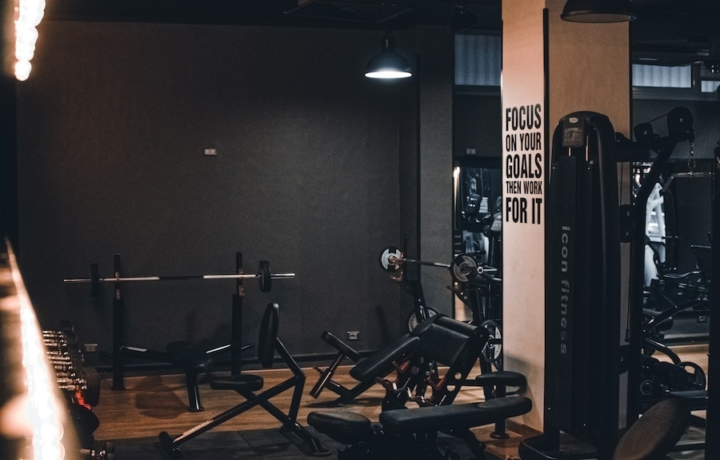Exercise
Barbell Upright Row

Barbell Upright Row
How to Perform
- Stand with your feet shoulder-width apart and grip the barbell with an overhand grip slightly narrower than shoulder width.
- Hold the barbell at arm's length against your thighs with your back straight, chest up, and shoulders pulled back and down.
- Inhale and brace your core, then exhale as you pull the barbell straight up along the front of your body by raising your elbows.
- Lead with your elbows and keep them higher than your forearms throughout the movement, pulling until the bar reaches mid-chest height.
- At the top position, your elbows should be pointing outward and upward with the bar just below your chin, while maintaining a tall posture.
- Hold the contracted position for a brief moment, focusing on squeezing your trapezius muscles.
- Inhale as you slowly lower the barbell back to the starting position with control, keeping it close to your body.
- Maintain proper posture throughout the entire movement, avoiding any forward lean or momentum to lift the weight.
Important information
- Keep your wrists in a neutral position and avoid excessive flexion to prevent strain.
- Don't lift the bar higher than mid-chest level to minimize shoulder impingement risk.
- Make sure your elbows stay higher than your wrists throughout the entire movement.
- If you experience shoulder pain, consider using a wider grip or alternative exercises like face pulls or lateral raises.

Barbell Upright Row
Exercise Details
Primary Muscles
Muscle Groups
Mechanic
Risk Areas
Built for progress
Take the guesswork out of training
Create personalized AI-powered workout plans that evolve with you. Train smarter, track every rep and keep moving forward, one workout at a time.






The Barbell Upright Row stands as a classic compound movement that has maintained its place in strength training and bodybuilding routines for decades. This intermediate-level exercise primarily targets the front and side deltoids while significantly engaging the trapezius muscles, creating that coveted shoulder width and upper back development that many fitness enthusiasts pursue.
When incorporated into bodybuilding regimens, the Barbell Upright Row serves as an excellent mass builder for the shoulder complex, helping to create that balanced, capped deltoid appearance. The movement's unique pulling pattern stimulates multiple muscle groups simultaneously, making it an efficient choice for those looking to maximize their training time while still hitting key upper body areas.
Many HIIT practitioners have also embraced this exercise as a powerful addition to their high-intensity circuits, using moderate weights to drive up heart rate while building functional shoulder strength. The metabolic demands of the movement, particularly when performed with controlled tempo and appropriate loading, can contribute significantly to caloric expenditure during intense training sessions.
From a strength perspective, the Barbell Upright Row develops pulling power through the shoulders and upper back, translating to improved performance in other lifts and daily activities. The exercise builds the type of functional strength that supports everything from overhead pressing movements to carrying heavy objects in real-world scenarios.
While effective, this exercise deserves respect and attention to form due to its technical nature. The shoulder joint's complexity means that individual anatomical differences can affect how comfortable and beneficial this movement feels. Many experienced lifters find that moderating weight and focusing on quality contractions yields better results than attempting to move extremely heavy loads, particularly for shoulder development rather than just trap engagement.
For those seeking comprehensive shoulder development, the Barbell Upright Row remains a time-tested tool that, when properly programmed within a balanced routine, can contribute significantly to upper body strength, aesthetics, and performance.
FAQ - Barbell Upright Row
The Barbell Upright Row primarily targets the deltoids (especially the lateral and anterior heads) and trapezius muscles. It also engages the biceps and forearms as secondary muscle groups during the pulling motion.
Safety depends on your individual shoulder anatomy and technique. Many lifters benefit from using moderate weights, keeping elbows below shoulder height, and maintaining a slightly wider grip to reduce impingement risk. If you experience shoulder pain, consider alternative exercises like lateral raises or face pulls.
The most common mistakes include pulling the bar too high (above shoulder level), using an excessively narrow grip that increases shoulder strain, jerking the weight with momentum rather than controlled muscle action, and allowing the wrists to flex excessively. Focus on smooth movement and proper posture throughout the exercise.
Most lifters benefit from moderate weights that allow for 8-12 controlled repetitions with perfect form. This exercise typically responds better to moderate weight with proper technique rather than maximum loading, as heavier weights often compromise shoulder safety and reduce targeted muscle activation.
Try using dumbbells, cables, or an EZ bar instead of a straight barbell for a more natural grip. You can also experiment with grip width (wider generally means less shoulder stress), vary your elbow path slightly outward rather than directly up the midline, or incorporate partial ranges of motion if full pulls cause discomfort.







